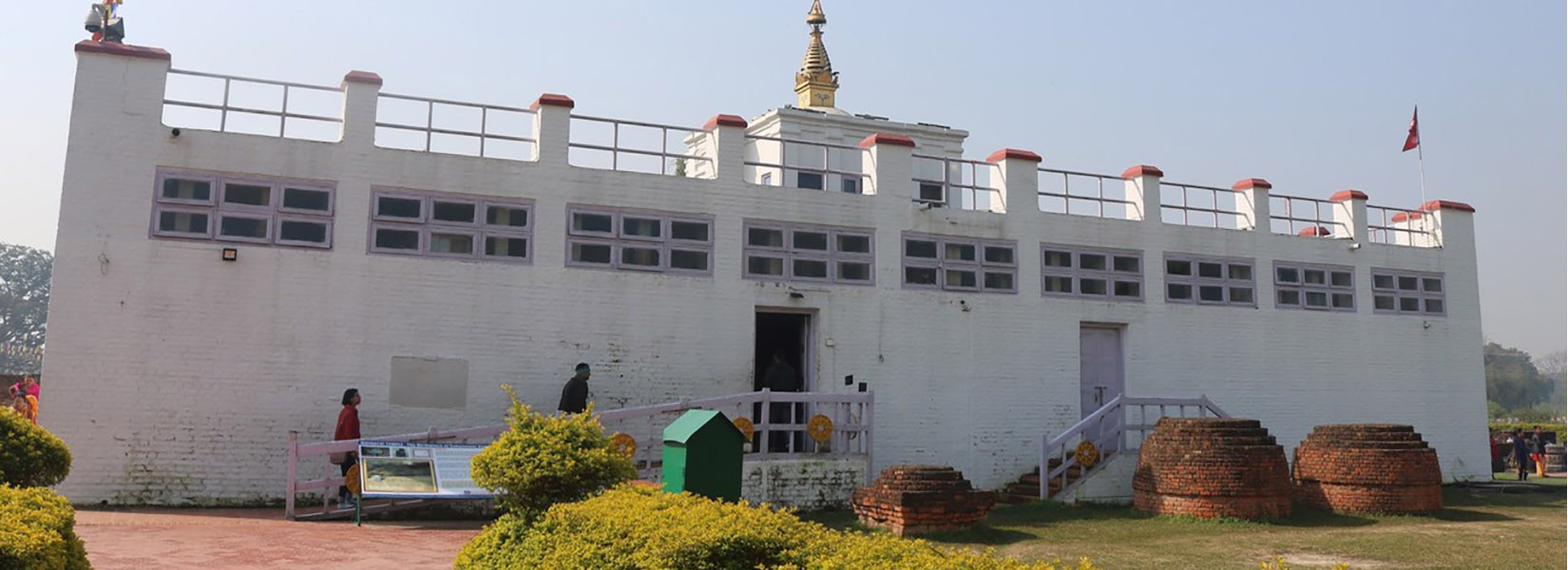About Lumbini Tour
Lumbini Lord Buddha birth place tour, a pleasant and serene spot of Nepal flat land of Terai belt, where Lord Buddha famously known as the ‘Light of Asia’ was born on the very spot way back in May year 642 B.C.
The birth name of Buddha as Siddhartha Gautama was known to be Buddha (A man of great Wisdom and Enlighten) where Buddha had announced his famous word "This is my final rebirth" as he entered the world.
Buddhist tradition also has it that he walked immediately after his birth and took seven steps, under each of which a lotus flower bloomed.
In 249 BC, the Buddhist convert Emperor Asoka visited Lumbini and constructed four stupas and a stone pillar. Asoka’s Pillar bears an inscription that translates as: "King Piyadasi (Asoka), beloved of Devas, in the 20 year of the coronation, himself made a royal visit, Buddha Sakyamuni having been born here, a stone railing was built and a stone pillar erected to the Bhagavan ["blessed one"] having been born here. Lumbini village was taxed reduced and entitled to the eight parts (only)".
The site was rediscovered in 1895, when a German archaeologist came upon Asoka’s Pillar, identified by its inscription. Records made by the Chinese pilgrim Fa Xian were also used in the process of identifying this religiously acclaimed site. Lumbini was designated a UNESCO World Heritage Site in 1997.
PLACES OF INTEREST AND HERITAGE SITES:
Maya Devi temple:
Maya Devi Temple dedicated to mother of Lord Buddha where he was known as prince Siddhartha in early childhood, according to Buddhist tradition, Maya Devi (or Mayadevi) gave birth to the Buddha on her way to her parent's home in Devadaha in the month of May in the year 642 BC.
Maya Devi Pond:
A clear pond where Queen Maya Devi of Sakya Kingdom used to take daily bathe and dip in the pond, which still exists after thousands of centuries a site of great holy significance for Buddhist followers as well to historian.
Bodhi Tree:
According to Buddhist tradition, Maya Devi (or Mayadevi) gave birth to the Buddha on her way to her parent's home in Devadaha in the month of May in the year 642 BC.
Feeling onset of labor pains, she caught branches of Bodhi tree and gave birth to Siddhartha Gautama, the future Buddha.
Similarly Gautam Siddhartha the prince after leaving worldly pleasures and comfort and mediate under a Bodhi Tree where he achieved Enlightment and reached Buddha-hood.
Asoka Pillar:
A famous historical king and emperor of India as well conqueror after many years of battle to unite his kingdom, converted to Buddhism religion and visited Lumbini to mark the birth right of Buddha.
Where he erected and built a Pillar with inscription to prove Buddha was born in Lumbini which was a Sakya Kingdom, at present within Nepal territory.
This was in 249 BC, Emperor Asoka visited Lumbini and constructed four stupas and a stone pillar. Asoka’s Pillar bears an inscription that translates as: "King Piyadasi (Ashoka), beloved of devas, in the 20 year of the coronation, himself made a royal visit, Buddha Sakyamuni having been born here, a stone railing was built and a stone pillar erected to the Bhagavan ["blessed one"] having been born here. Lumbini village was taxed reduced and entitled to the eight parts (only)".
The site was rediscovered in 1895, when a German archaeologist came upon Asoka’s Pillar, identified by its inscription. Records made by the Chinese pilgrim Fa Xian were also used in the process of identifying this religiously acclaimed site. Lumbini was designated a UNESCO World Heritage Site in 1997.

